|
|
|
|
Products mentioned in this Article
--None--
|
|
|
|
|
|
|
|
|
 |
|
|
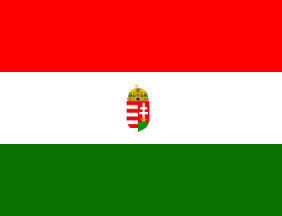 |
History of the Royal Hungarian Army 1941-43
by Wayne Turner
When the Hungarians entered the war as part of the Axis in 1941, it was not through some desire to be part of Hitler’s vision of a new Europe, but for their very own regional and territorial motives. Like the Germans and Austrians, the Hungarians had been severely punished for their role in the First World War, they lost much territory to their neighbours Czechoslovakia, Romania and Yugoslavia.
|
| Under the rule of Regent Admiral Horthy they began to regain some of
their territory, the first Vienna award in 1938 returned parts from
Slovakia and Ruthenia. Their next opportunity to regain territory came
with the German invasion of Czechoslovakia in 1939; with German
approval they were able to take the rest of Ruthenia. It was during
1939 that the Hungarians saw their first combat of the war, Border
Guards throwing back attacks from the Czechs around Munkács before
advancing themselves and taking the town of Orhegyalja. |
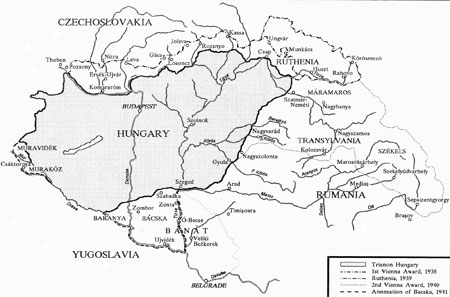 |
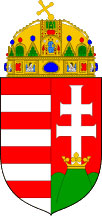
|
This early campaign showed there was still improvement required to overcome the difficulties imposed on the Hungarian army after WWI, but Hungarians showed high morale and nationalist spirit during this short campaign. After much toing and froing with the Germans over Slovakia, Hungary’s northern border was finally set by 1940. But Hungary’s relationship with Germany continued to be stormy; Hungary refused the Germans permission to cross its territories during the 1939 Polish campaign.
Hungary also had territorial issues to resolve on their southern and western borders with Yugoslavia and Romania. Hungary mobilised two armies in 1940 just in case the Romanians were unwilling to accept a territorial agreement. But in August they did, this and large parts of Transylvania were given to Hungary under the 2nd Vienna Award. Conflict was avoided. In November 1940 Hungary signed the Tripartite Pact with Italy and Germany.
|
But it was not so with the annexation of Bánát, the traditional Hungarian border zone with Yugoslavia. With Hitler’s invasion launched in 1941 against Yugoslavia the Hungarians saw another opportunity to regain some territory, though they broke their Eternal Friendship treaty in the process. The whole Third Hungarian Army of just under 400,000 men was mobilise and moved into Bánát province of Bácska on April 11. By April 14 the whole of Bácska was in Hungarian hands. Fighting had been light, with Serbian units retreating before the Hungarians and Croatian units of the old Yugoslavian army choosing to surrender instead.
|
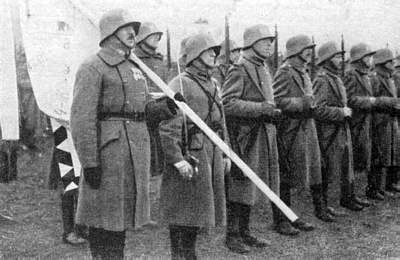
|
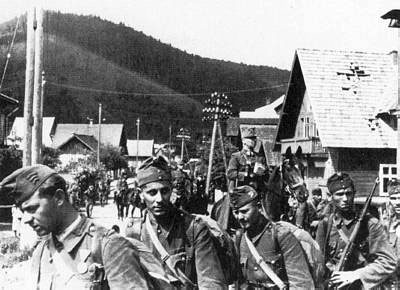 |
Operation Barbarossa 1941
Hungary’s decision to join the German invasion of the Soviet Union was uncertain in 1941, the politicians were split and the Soviets had offered to support Hungary’s territorial claims against Romania in exchange for their neutrality. But the matter was decided by a bombing raid on the cities of Kassa and Munkács on June 26, 1941, by allegedly Soviet bombers, though it is uncertain whether they were in fact Soviet or perhaps German or disgruntled Polish planes in Romanian service. It proved enough to push the Hungarians into the German camp. The Hungarians declared war on the Soviet Union on June 27, 1941.
|
Forces
The Carpathian Army Group was formed from border and mountain units stationed in the Carpathian Mountains facing the Soviet frontier.
It consisted of:
1st Mountain Brigade
8th Border Guard Brigade (with the 2nd and 8th Bicycle Battalions attached)
2nd battalion/24th Artillery Regiment
Mobile Corps (1st Motorised, 2nd Motorised and 1st Cavalry Brigades)
|
The attack began on June 27; the initial aim of the Hungarians was to take the cities of Zalcszezyi, Kolomea and Stanislavov. First the Carpathian passes had to be forced. The Soviets hadn’t been idle and had damaged much of the railways and road on their side of the border, hindering any rapid progress that could be made by the Mobile Corps.
|
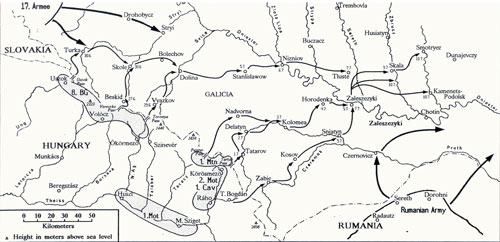 |
But once clear of these hindrances, which ranged about 50km inside the Soviet border, the Mobile Corps was able to get into full flight pushing the retreating Soviets before them. The success of the German drive on Lvov meant the Hungarians had to push hard to keep up with them.
From July to November 1941 the Mobile Corps lead the Hungarian advance. They moved from their positions in the Carpathians to Mecsebelovka, just to the south of Kharkov. They engaged in a major battle at Nikolayev, August 12-16, taking part in the battle with the 16. Panzer Division and SS-Leibstandarte Brigade.
Next they defended various Soviet attempts to form bridgeheads over the Dnieper around Nikopol in late August early September. On October 12, the Mobile Corps (now missing the horsed cavalry elements who had been withdrawn back to Hungary) crossed the Dnieper River in support of the German advance on Izium.
On November 11 the Mobile Corps was withdrawn back to Dnieperpetrovsk and replaced in the front line.
|
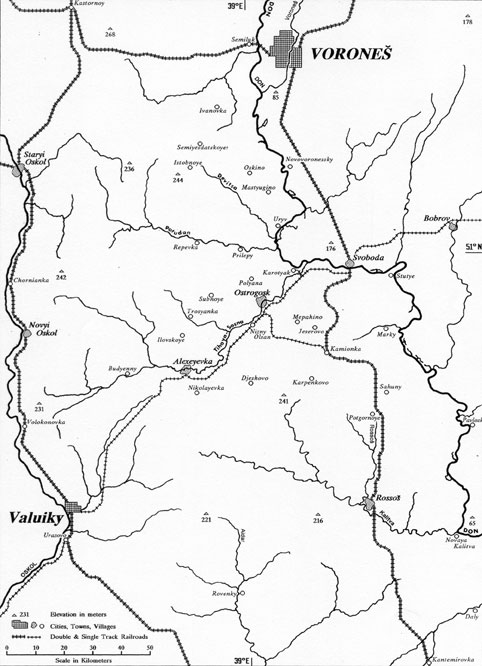 |
1942-43
In December 1941 the British declared war on Hungary, ending hopes that Hungary could limit its involvement to the war against the Soviets. Horthy decided to limit Hungary’s involvement in further operations in Russia to the minimum he could. Finally after much wrangling between Berlin and Budapest it was finally decide the Hungarians would contribute an army of three corps and one armoured division.
The army consisted of:
III Corps (6th, 7th and 9th Light Divisions)
IV Corps (10th, 12th and 13th Light Divisions)
VII Corps (19th, 20th and 23rd Light Divisions)
1st Armoured Field Division
Between April 11 and July 27 the Hungarian 2nd Army slowly arrived at the front and took up positions within Armeegruppe Weichs, along with the German 2. Armee and 4. Panzer Armee.
As the new Hungarian army was being moved to the front the Germans launched Operation Fall Blau on June 28, 1942. The Hungarian units that took part in the initial attack were the III Corps HQ, the 7th and 9th Light Divisions and elements of the III Corps troops. |
These new green troops, though initially equipped with Hungarian weapons were resupplied with German weaponry to ease logistical problems and had yet to become familiar with their new weapons. Hungarian troops took Staryi Oskol on July 4 and by July 7 the III Corps leading units had reached the Don River.
|
The Battles for Uryv
The Hungarians had barely dug into positions behind the Don when the Soviet launched attacks across the river to establish bridgeheads at Uryv, Karotyak and Stutye. The Hungarians counter-attacked with the newly arrived 1st Armoured Field Division. They pushed the Soviets out of Uryv in to a small bend in the Don River to the north of the town. The Hungarian tankers had learnt well from their German instructors in their newly issued Panzer 38(t) and Panzer IVs. They waited until the T-34s had fired, knowing the crew would be temporarily blinded by smoke, moved around their flanks, shooting at their slightly weaker side armour. The Hungarian Armoured troops accounted for 21 T-34 during the 1st Battle of Uryv (July 27). Unfortunately the Hungarian attack had to be called off when ammunition supplies ran low, the Germans had yet to resupply them. |
|
The Hungarian III Corps attacked again on August
10, but Soviet resistance proved tough. After taking high casualties
they were forced to withdraw, but they had prove their metal to the
Germans, only their inexperience had let them down.
A third attempt was made on the Uryv bridgehead on September 9. This time the Germans took the role of organising and planning the attack. Taking part were the Hungarian 7th, 12th, 13th and 20th Light Divisions, supported by 1st Armoured Field Division and one German Division of the XXIV Panzer-Korps.
|
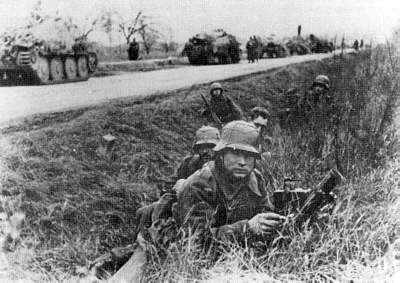 |
After five days of heavy fighting the attack was
broken off, both sides taking substantial casualties. The Hungarian
troops were left to fortify the position and seal off the Soviet
Bridgehead.
The Battles for Karotyak
Facing this Soviet bridgehead was the Hungarian IV
Corps, and they were tasked with eliminating this Soviet pocket. They
attack on August 7 with support of the 1st Armoured Field Division and
by the evening 12th Light Division and 1st Armoured Field Division had
reached the Don at the northern outskirts of the town. They were
continually harassed by Soviet aircraft with little to counter them
other than small arms, as the Corps anti-aircraft was still moving to
the front. The armour was recalled back to the III Corps at Uryv on
August 8, leaving the left flank of the 12th Light Division exposed.
|
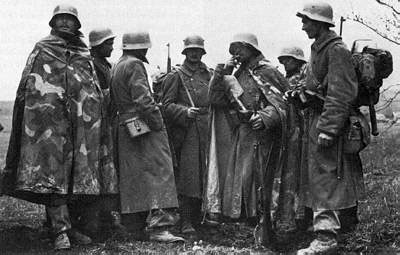 |
The Soviets quickly took advantage of the opportunity and thrust through the gap against the men of the IV Heavy Artillery Battalion. The Hungarian artillery were forced to throw forward most of their men as infantry, leaving minimal crews to man the guns. The artillerymen were able to halt the attack before it reached their gun positions. The Soviet attack was halted with the arrival of German reinforcements.
On September 3 the attack on Karotyak began again with better support from the armour and headquarters troops. With support from the Germans they finally took the Soviet bridgehead.
|
Winter 1942-43
By mid September 1942 the 2nd Hungarian Army had settled into defensive positions along the Don River. Unfortunately a general lack defensive supplies like mines and barbed wire and a shortage of labour meant only the defensive areas immediately around the bridgeheads could be adequately fortified. The Don River itself was not the formidable obstacle it would seem, being shallow and easily wadeable in many places.
|
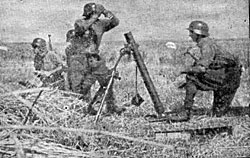
|
Supply problems plagued the 2nd Army, with both
home and the Germans reluctant to give too much to the Hungarian troops
in the front line. The Germans seeing their allies as a secondary
priority and the Hungarian Government keen to withhold equipment and
supplies to build up the Home Defence Army.
The weather also played a role, armoured troops complained that their 38(t) tanks needed time to warm-up in cold weather, and that if stationed to close the front lines any break-through couldn’t be stopped if the tanks weren’t up and running in time.
Several German units were moved into the area to support the Hungarians:
168. Infantriedivision
559. Panzerjager Abteilung (supporting above)
429. Infantrieregiment (between III and IV Corps facing Uryv)
After the neighbouring Romanian and Italian armies were crushed the Germans sent further reinforcements the 2nd Army sector, these included:
700. Herespanzerverband
190. Sturmgeschutz Abteilung
26. Infantriedivision
These units along with the 168. Infantriedivision and
the Hungarian 1st Armoured Field Division were organised into Corps
Cramer as the reserve for the sector.
|
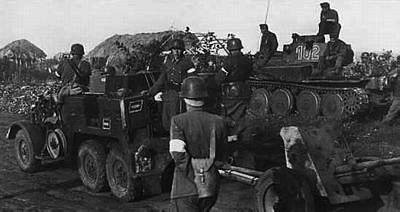
|
The Soviet Attack
On January 3, 1943 the Soviets launched several probing attacks against the 2nd Hungarian and 8th Italian Armies, these attacks were successfully fended off.
The Storm broke over the 2nd Hungarian Army on January 12. The 40th Soviet Army launched from the Uryv bridgehead into the 7th Light Division and the German 429. Infantrieregiment. The Germans and the 35th Infantry Regiment (7th LD) were able to hold their positions, but the 4th Infantry Regiment (7th LD) was overrun.
|
On this first day the Soviets were able to drive a 6km wide gap between the III and IV Corps, penetrating up to 3km.
January 13 saw Soviet attacks concentrate on the 20th Light to the north of Uryv. The 20th Light were supported by the remains of the 7th Light and German 429 IR. At dawn both corners of the Uryv bulge were still held. A counter-attack was launched by the four battalions of the III Corps reserves supported by the German 700. Herespanzerverband. By the end of the day the German Panzer force had just 4 Panzer 38(t)s remaining. The Hungarian troops engaged had been smashed by continuous and un-relenting Soviet attacks.
The commander of the German 429 IR wrote in his report: “The Hungarian troops had fought very well, and that the cause for the failure of the attempt lay with the helplessness of the Hungarian units against enemy armour and the freezing weather.”
The Gap in the Hungarian lines had widened to 10km wide and 12km deep!
On January 14 the Soviet offensive got into full swing and thrusts were made from Stutye and Kantemirovka. The Soviet 18th Rifle Corps smashed through the 12th LD and moved towards Ostrogosk. The 3rd Tank army attacked the XXIV Panzerkorps encountering resistance until they committed two tank corps against them, though progress was still slow.
The release of the German 168 ID from reserves on January 15 allowed the slowing in the Soviet advance on the southern flank, but to the north a continuos flow of Soviet troops poured through the gap. The remnants of the Hungarian III Corps now faced south, their western flank exposed. Other Divisions along the front were all under pressure. The 7th and 12th LD had been destroyed; the 2nd Hungarian Army sector was quickly running out of men.
|
On January 16 it was the 13th LD at Karotyak turn to come under pressure from the Soviet 40th Army. After heavy fighting they withdrew on Ostrogosk where they and the 10th LD and German 168 ID became surrounded. The 10th LD lost its artillery to the Soviet 18th Rifle Corp when it couldn’t be moved because of lack of horses.
Corps Cramer launched a counter-attack. It stalled the advance of the Soviet 18th Rifle Corps, but it was called off when the 1st Armoured Field Division’s flanks were exposed. The Soviets also began to get behind the positions of the VII Corps, the 2nd Hungarian Army ordered retreat before their position became too exposed.
|
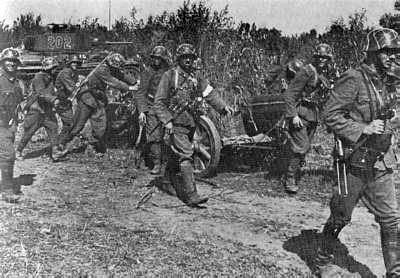
|
Resistance continued in the north by the III Corps, with German reinforcement, on January 17. The Soviet target was Alexeyevka and Ilovskoye, Ilovskoya was the gateway to the Hungarian retreat. Lead elements of the Soviets 40th Army reached the airfield at Ilovskoya around noon, but fierce resistance from the Hungarian Airforce ground crew forced them to withdraw.
The IV Corps was ordered to retreat on Ostrogosk. By evening all communication from the General Jány’s 2nd Hungarian Army HQ were cut, he no longer had contact with any of his units.
On January 18 Hitler declared Ostrogosk a fortress to be defended to the last man, trapped inside were the remainder of the 10th and 13th LD and German 168 ID and corps troops from the III and IV Corps.
|
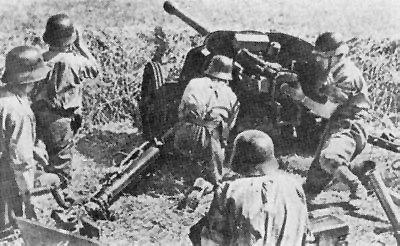 |
The VII Corps encountered the left wing of the Soviet
18th Rifle Corps while withdrawing and when Soviets tanks appeared to
the south their retreat rapidly turned into a rout. The Soviets
occupied Alexeyevka, but a counter-attack by the 1st Armoured Field
Division pushed the Soviets out. The Hungarian armour then joined the
defence of Ilovskoye to the north.
On January 19 and 20 the defence of Alexeyevka,
Ilovskoye and Ostrogosk continued, and on January 20 the Soviet 40th
Tank Army turned its attention to the German 2. Armee to the north,
leaving the 18th Rifle Corps and 3rd Tanks Army to finish off the
Hungarian 2nd Army.
|
On January 21 contact was re-established with Ostrogosk and the last German and Hungarian troops were withdrawn to Novyi Oskol, meanwhile the 1st Armoured Field Division tenaciously held of continued attempts to take Alexeyevka. The remaining Hungarian troops in the Ostrogosk-Alexeyevka area were now grouped together under Corps Cramer, and on January 22 they started withdrawing towards Budyenny and on to Novyi Oskol.
On January 22 the Hungarian 2nd Army ceased functioning as a command unit and was moved to the rear to reorganise the Hungarians.
|
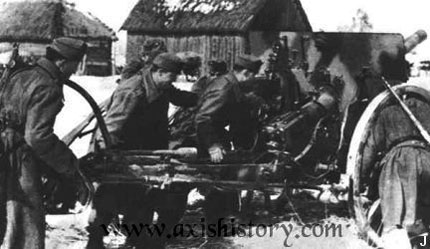
|
| Those units still capable of fighting remained with Corps Cramer, under German command. On
January 25 Corps Cramer was reassigned the German 2. Armee, at this
time there was still 12,000 Hungarians fighting. As the front
stabilised Hungarian units were sent to the rear where they began their
reorganisation. The Hungarians wouldn’t see any serious fighting again
until 1944. |
Last Updated On Tuesday, January 12, 2010 by Blake at Battlefront
|
|
|